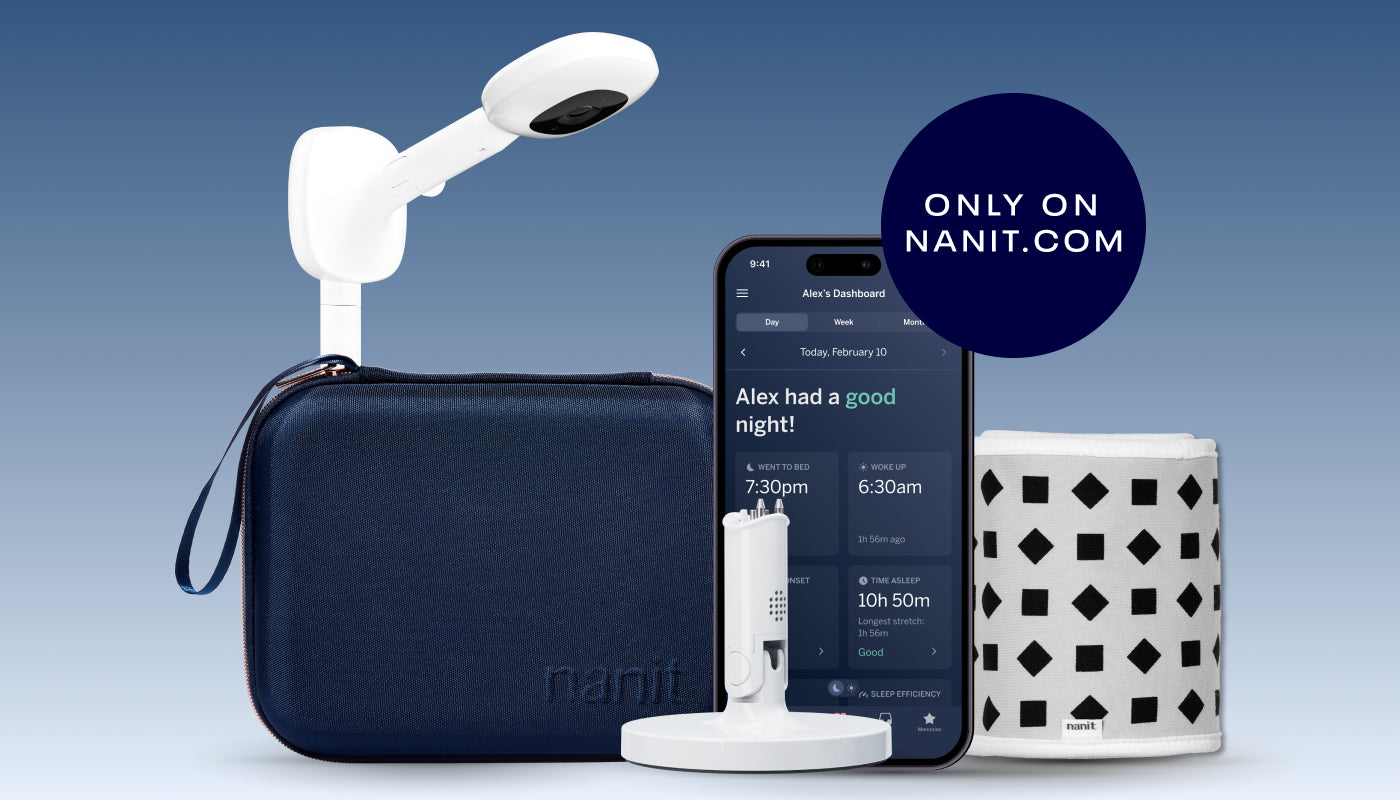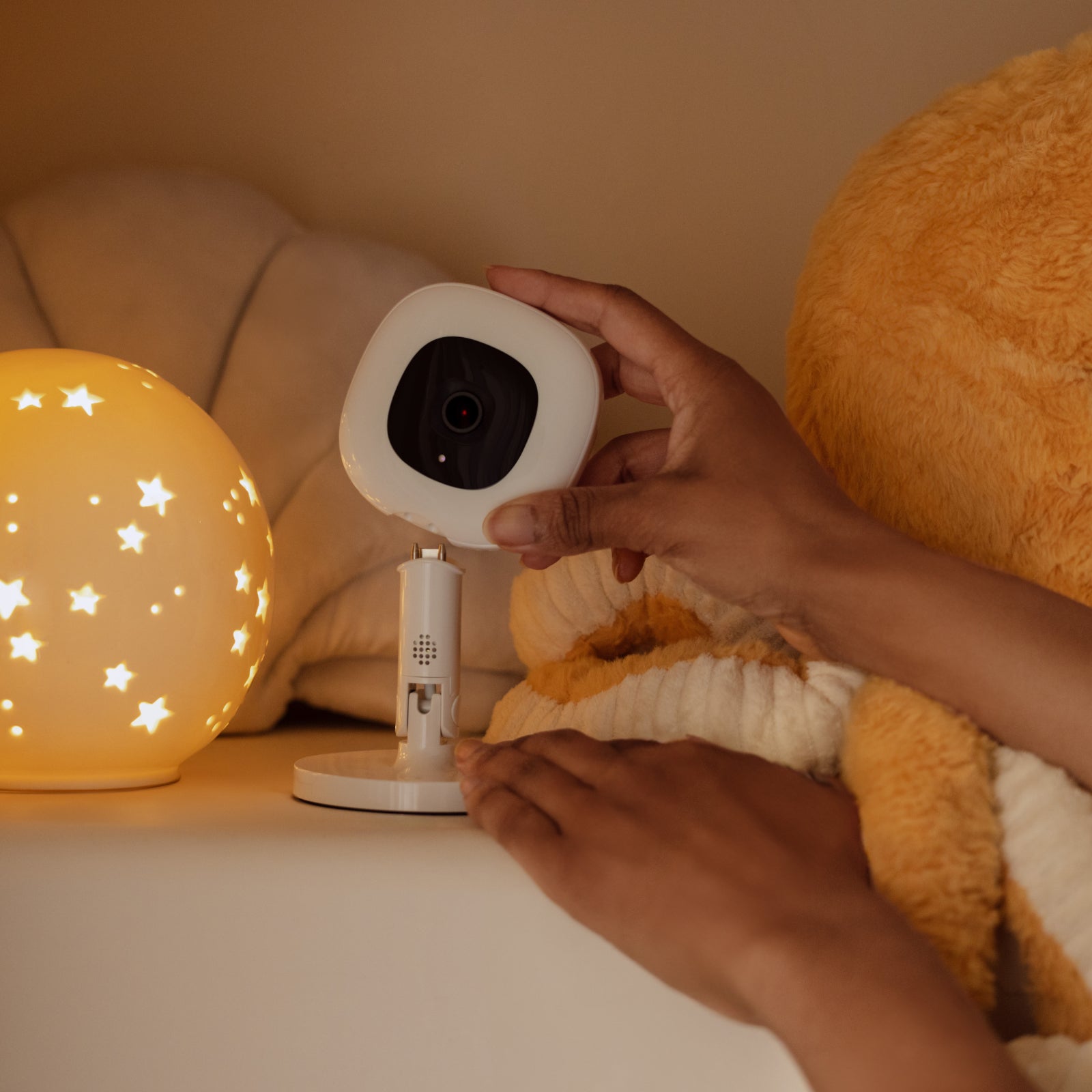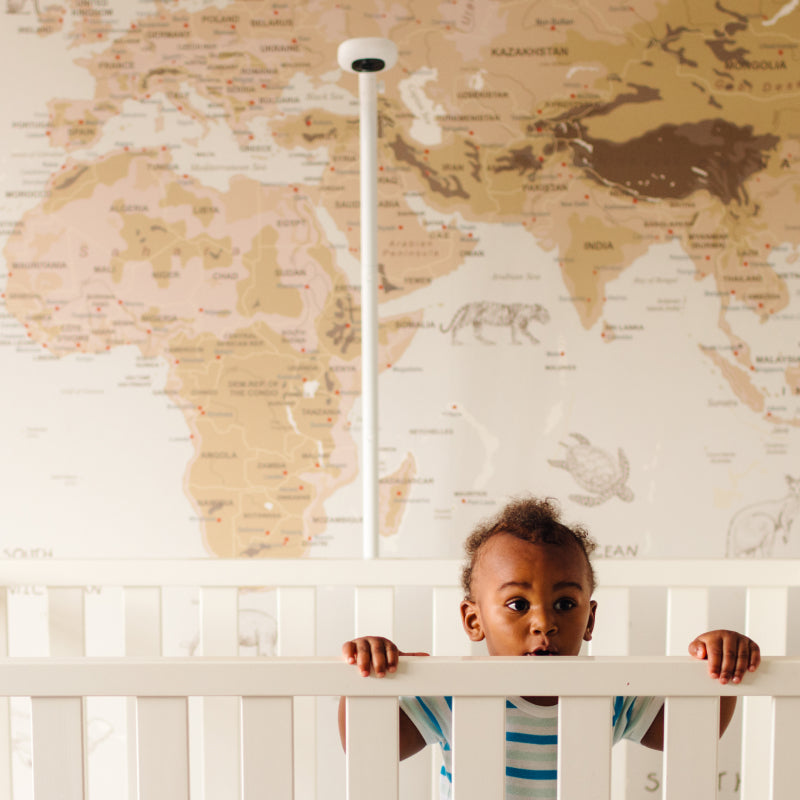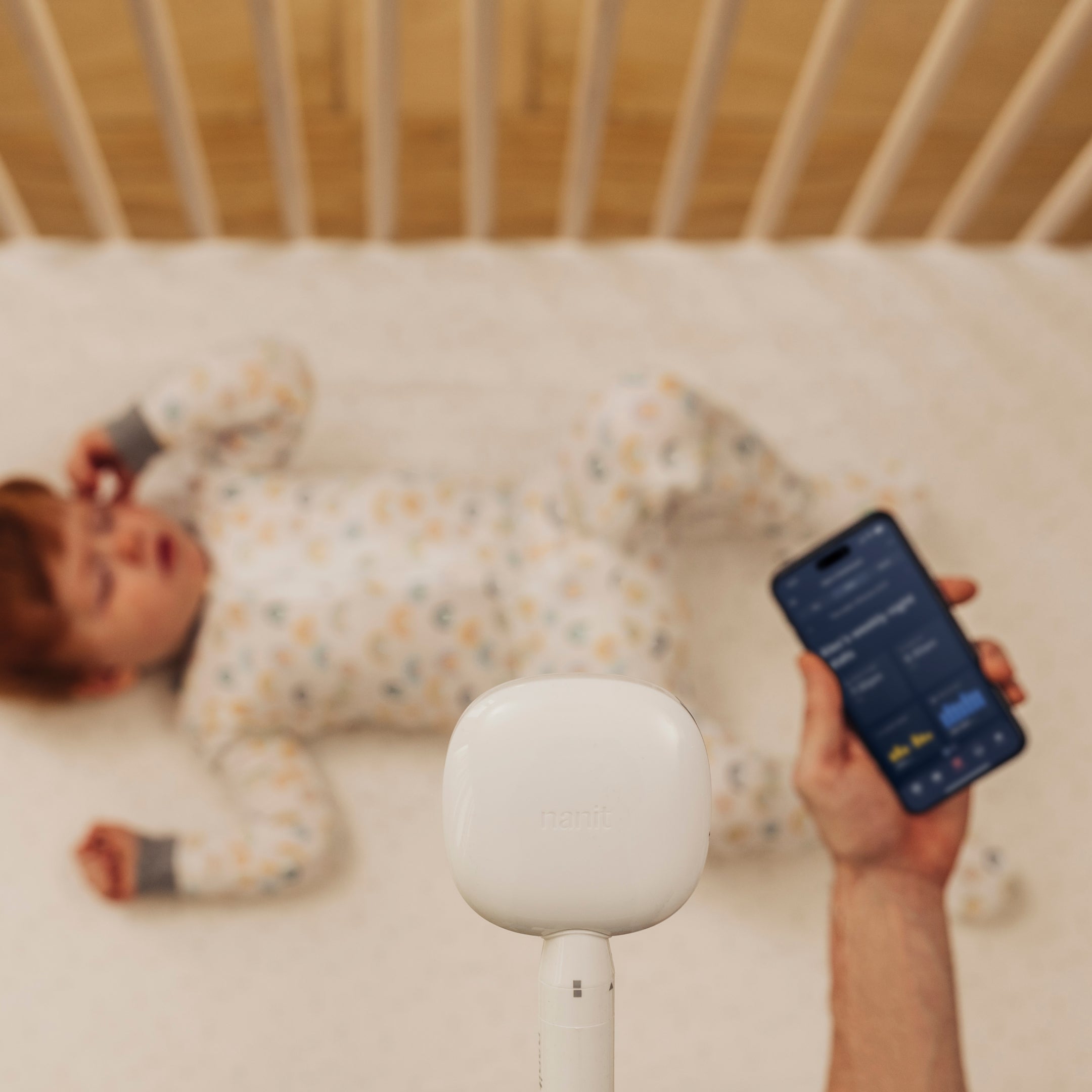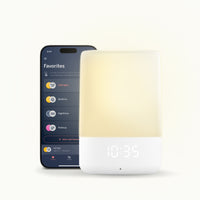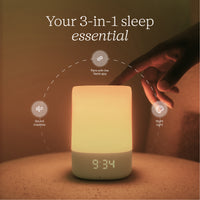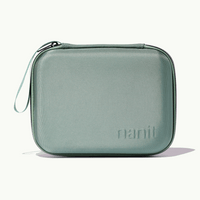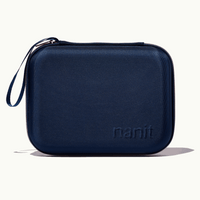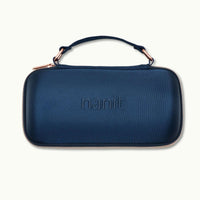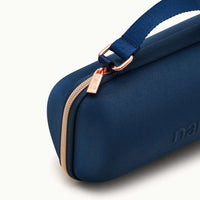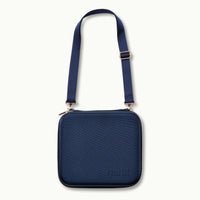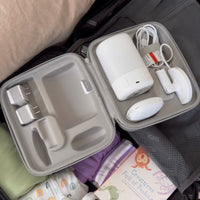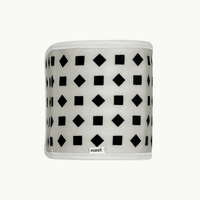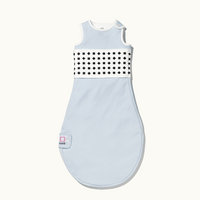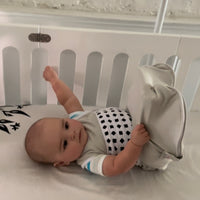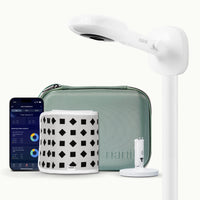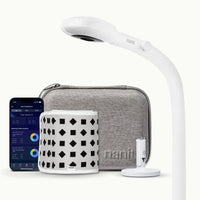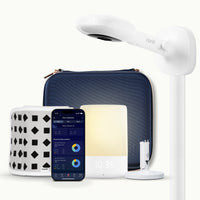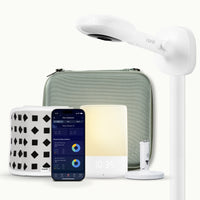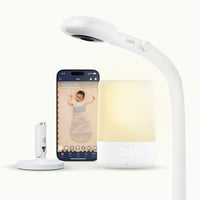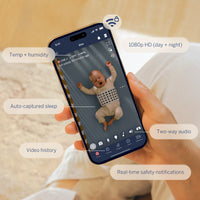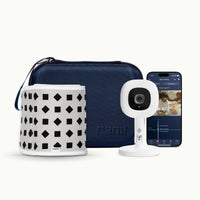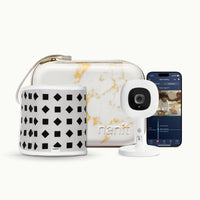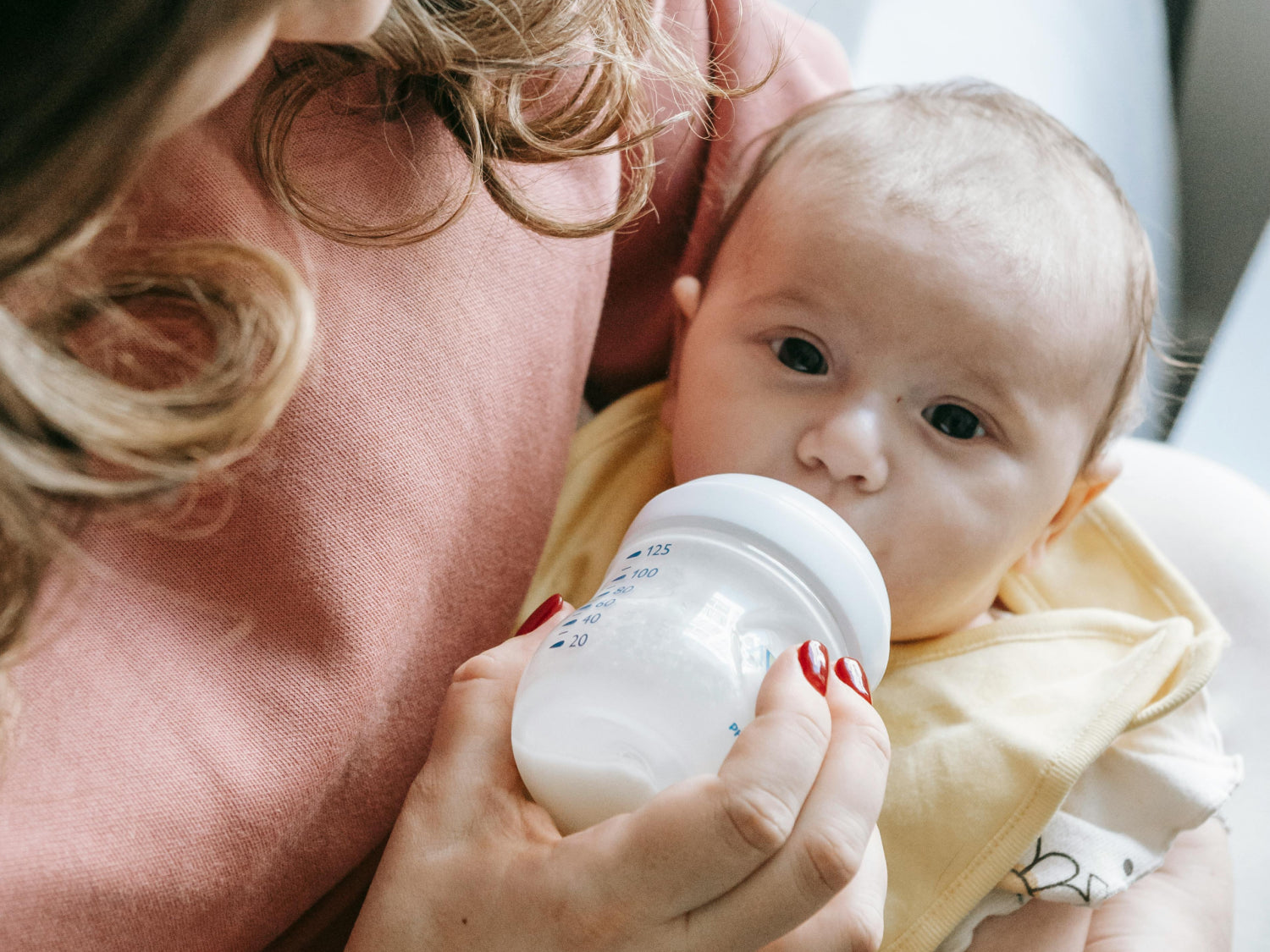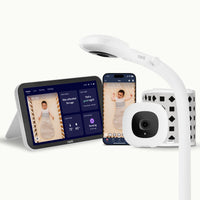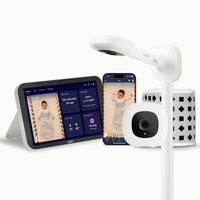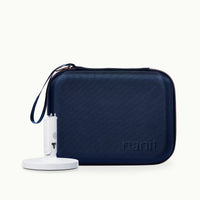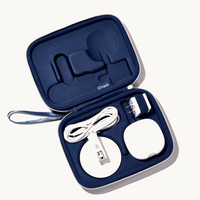Feeding your baby with a bottle—whether it's breast milk, formula, or a little of both—is one of those things that sounds simple until you're doing it at 2 a.m. with cold milk from the fridge and a very hungry, very impatient baby.
Here's the thing: most babies aren't fans of cold milk. And the ways we've traditionally warmed bottles? They're either inconsistent, time-consuming, or unsafe.
That's where bottle warmers come in. Think of them as your feeding-time sidekick — designed to heat your baby's milk gently and evenly, providing a convenient solution for busy parents while ensuring your baby's safety. Whether you're a first-time parent trying to navigate feeding logistics or an experienced caregiver looking to streamline your routine, understanding how bottle warmers work can be a total game-changer.
As we discuss in our comprehensive guide to newborn sleep tips for exhausted new parents, creating efficient routines around feeding and sleep can make everything feel a little more manageable.
What Are Bottle Warmers and How Do They Work?
A bottle warmer is basically a specialized appliance designed to heat baby bottles quickly, safely, and evenly. Unlike microwaves (which can create dangerous hot spots in milk) or stovetop methods that can be hit-or-miss, bottle warmers use controlled heating methods to bring your baby's milk to the optimal temperature gradually and uniformly.
The Science Behind Safe Bottle Warming
Most bottle warmers work by using warm water circulation or steam to heat bottles from the outside in. This gentle approach helps preserve all the good stuff in breast milk and formula while eliminating the risk of overheating.
Modern bottle warmers often come with features like automatic shut-off, temperature control, and even smartphone connectivity. Many can accommodate different bottle sizes and shapes, making them pretty versatile for whatever feeding situation you're dealing with.
💡 Nanit Expert Insight
The best temperature for infant milk is close to body temperature (about 98.6°F or 37°C), so it’s pleasantly lukewarm, not hot. Heating milk too much can burn your baby’s mouth and may also damage some of the beneficial nutrients and antibodies in breast milk.
Types of Bottle Warmers Available
Not all bottle warmers are created equal. Here's a breakdown of the main types so you can figure out what might work best for your family.
Electric Steam Warmers
These are the popular ones. They use steam circulation to heat bottles evenly and quickly—usually in about 2-4 minutes. They're efficient, can handle various bottle sizes, and get the job done fast when you've got a hungry baby who's not interested in waiting.
Water Bath Warmers
Water bath warmers circulate warm water around the bottle (think of it like a high-tech version of the bowl-of-warm-water method). They're a bit slower—around 4-6 minutes—but they're super gentle on milk nutrients and provide really consistent results.
Portable and Travel Warmers
When you’re on the go with your little one, portable warmers are clutch. These can be battery-powered, USB-rechargeable, or designed to work with car adapters. Some use special insulated sleeves or heating pads that warm bottles without needing water or electricity.
Multi-Function Warmers
These all-in-one devices do more than just warm bottles. They can sterilize, defrost frozen breast milk, or even warm baby food. If counter space is tight or you love a good multitasker, these might be worth considering.
|
Warmer Type |
Heating Method |
Speed |
Best For |
|
Electric Steam |
Steam circulation |
Fast (2-4 minutes) |
Quick, everyday use |
|
Water Bath |
Warm water circulation |
Moderate (4-6 minutes) |
Gentle, nutrient preservation |
|
Portable |
Various methods |
Varies |
Travel, on-the-go feeding |
|
Multi-Function |
Steam/water combination |
Moderate to fast |
Space-saving, versatile needs |
Benefits and Safety Considerations
Bottle warmers offer many advantages over other heating methods, but like any baby product, they come with important considerations that every parent should keep in mind.
Key Benefits of Using Bottle Warmers
-
Even heating: No dangerous hot spots that can burn your baby's mouth
-
Nutrient preservation: Gentle heating protects beneficial enzymes and antibodies
-
Convenience: Hands-free operation allows you to tend to other needs
-
Consistency: Reliable temperature control for every feeding
-
Speed: Faster than traditional warm water methods
-
Safety features: Automatic shut-off and temperature controls
Choosing the Right Bottle Warmer
Choosing the best bottle warmer for you depends on your specific needs and lifestyle. Here's what to think about.
Compatibility with Your Bottles
Not all bottle warmers work with every bottle brand or size. Before you buy, check that the warmer can handle the specific bottles you’re using. Some warmers come with adjustable sizing rings or can accommodate wide-neck bottles, while others work only with standard sizes.
Speed vs. Gentleness
Do you have a baby who goes from zero to hangry in seconds? A faster steam warmer might be worth it. If you're exclusively breastfeeding and occasionally using bottles, a gentler water bath warmer might be better for preserving breast milk nutrients.
Lifestyle and Usage Patterns
Think about when and where you'll use the warmer most often. Families who travel frequently should consider portable options, while those who primarily feed at home might prefer larger, multi-function models. Consider your kitchen counter space and whether you want a device that stays plugged in or one you store between uses.
💡 Choosing the Right Features
Consider features like automatic shut-off, digital displays, multiple size settings, and easy cleaning when comparing models. While advanced features can be convenient, ensure that the basic warming function meets your needs before focusing on extras.
Safety Tips and Best Practices
While bottle warmers are generally very safe when used correctly, there are a couple important safety guidelines to follow, regardless of which warming method you choose.
Temperature Testing and Guidelines
Always test warmed milk temperature before feeding by placing a few drops on the inside of your wrist. The milk should feel warm but not hot — similar to body temperature. If it feels hot on your skin, it's too hot for your baby and should be allowed to cool before feeding.
Timing and Storage Considerations
Never reheat the same bottle of milk twice, as this increases bacterial growth risk. Use warmed milk within one hour of heating, and discard any leftover milk after feeding. When warming breast milk, avoid overheating, which can destroy beneficial antibodies and enzymes.
🔥 Temperature Safety Guidelines
-
Ideal serving temperature: 98-100°F (body temperature)
-
Never serve milk that feels hot to the touch
-
Test temperature before every feeding
-
Allow hot milk to cool rather than serving immediately
-
When in doubt, err on the side of cooler rather than hotter
Hygiene and Cleanliness
Maintain strict hygiene standards with bottle warmers just as you would with bottles and other feeding equipment. Regular cleaning prevents bacterial growth and ensures optimal performance. Replace water in the reservoir regularly, even if the warmer hasn't been used, to prevent stagnation.
🚨 Critical Safety Reminders
-
Always test milk temperature before feeding
-
Never microwave bottles—this creates dangerous hot spots
-
Clean and maintain your bottle warmer regularly
-
Never warm the same bottle of milk twice
-
Follow manufacturer guidelines for maximum warming times
-
Use only the amount of water specified in instructions
Proper Usage and Maintenance
Getting the most out of your bottle warmer means using it correctly and keeping it clean.
Step-by-Step Usage Guide
Start by reading your specific warmer's manual thoroughly, as different models have varying requirements. Generally, you'll add the specified amount of water to the warmer, place the bottle in the warming chamber, and select appropriate settings based on the starting temperature of your milk (refrigerated vs. room temperature) and bottle size.
Most warmers will indicate when the warming cycle is complete through lights, sounds, or automatic shut-off. Remove the bottle carefully (it might be hot!), gently swirl the bottle to distribute heat evenly, then test the temperature before feeding.
Cleaning and Maintenance
Regular cleaning prevents mineral buildup and keeps everything working smoothly. Most warmers require periodic descaling—removing mineral deposits from hard water—using white vinegar or specialized cleaning solutions. Clean the exterior regularly with a damp cloth, and always empty any remaining water after use to prevent bacterial growth.
⚠️ Maintenance Schedule
Daily: Empty water reservoir and wipe exterior
Weekly: Deep clean all removable parts
Monthly: Descale according to manufacturer instructions
As needed: Replace any worn parts or filters
Alternatives to Bottle Warmers
While bottle warmers offer convenience and consistency, they're not the only option for warming baby bottles. Here are some alternatives to help you make informed decisions and provide backup methods when needed.
Traditional Warm Water Method
The time-tested method of placing bottles in a bowl of warm water remains effective and requires no special equipment. This method is gentle on milk nutrients and allows precise temperature control, though it takes longer and requires more attention than electric warmers.
Running Water Method
Holding the bottle under warm running water while rotating it can warm milk relatively quickly and evenly. This method works well for occasional use or when traveling, though it uses up water and requires constant attention.
Room Temperature Feeding
Some babies are totally fine with room temperature milk. If yours is one of them, this simplifies everything—especially for nighttime feedings or travel.
💡 Nanit Expert Insight
Offering milk at the right temperature can help your baby take a full feeding. When babies feed well and feel satisfied, they often sleep more soundly and for longer stretches
Travel Considerations and Portable Solutions
Maintaining feeding routines while traveling can be tricky, but planning ahead ensures your baby's feeding needs are met wherever you need to feed them.
Portable Warmer Options
Battery-powered and USB-rechargeable warmers offer true portability for travel, outdoor activities, or situations where electrical outlets aren't available. Car-compatible warmers that plug into vehicle power outlets provide convenient solutions for road trips or daily outings.
Travel-Friendly Alternatives
Insulated bottle holders can keep prepared warm bottles at feeding temperature for several hours, while thermal flasks filled with hot water can provide an improvised warming method anywhere. Some parents find that requesting warm water at restaurants or cafes provides an effective warming solution while dining out.
For families who frequently travel, consider exploring our essential items for newborn care, which includes tips for maintaining routines away from home and ensuring you have everything needed for safe, comfortable feeding wherever you are.
Making Feeding Time Smoother
The goal of any feeding tool, including bottle warmers, is to make the feeding experience more enjoyable and less stressful for both parents and babies. When feeding goes smoothly, it supports better sleep patterns, stronger bonding, and more confident parenting.
Consider how bottle warming fits into your overall feeding and sleep routines. Having a reliable, safe method for preparing bottles can be especially valuable during nighttime feedings when you want to minimize disruption while ensuring your baby's comfort and safety.
Supporting Healthy Sleep After Feeding
Once feeding is complete, the Nanit Pro Camera can help you monitor your baby's sleep patterns and ensure they're resting comfortably. With advanced sleep tracking and breathing monitoring, you'll have peace of mind knowing your baby is safe and sleeping well after feeding.
The Takeaway
Bottle warmers can be valuable tools for parents who regularly use bottles, whether for formula, expressed breast milk, or combination feeding. The key is choosing one that fits your needs, using it safely, and maintaining it properly.
Remember that while bottle warmers offer convenience, they're not essential for every family. Some babies are perfectly happy with room temperature milk, while others prefer the consistency that a warmer provides. Trust your instincts, pay attention to your baby's preferences, and choose feeding solutions that work best for your situation.
As with all aspects of baby care, the most important factors are safety, consistency, and responding to your baby's individual needs. Whether you use a bottle warmer, alternative warming methods, or serve milk at room temperature, the goal is always the same: ensuring your baby receives safe, comfortable feedings that support their growth, development, and wellbeing.
For more info on establishing healthy feeding and sleep routines, explore our comprehensive resources on baby sleep basics, which provides evidence-based strategies for supporting your baby's overall health and development through proper nutrition and rest.

